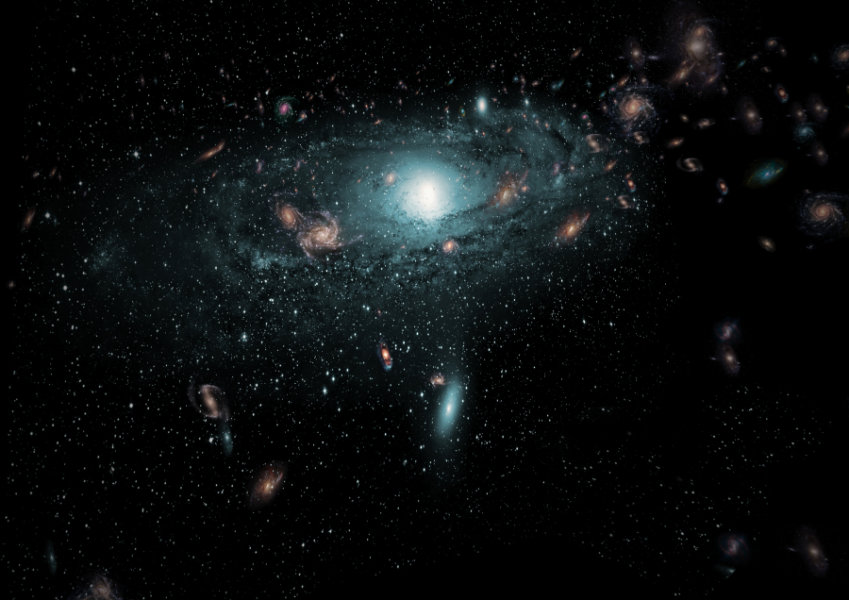Scientists have found several hundreds of galaxies, previously hidden behind the Milky Way.

Fantasy artist on the theme of the newly discovered galaxies. Their locations are based on real coordinates, but the sizes, types, and colors are randomly chosen.
The beauty of the Milky Way hides many celestial objects. But radio astronomers using the updated radio telescope at Parkes Observatory (Australia) managed to penetrate the interstellar matter of our galaxy and detect previously unknown galaxies. Their cluster, like the Milky Way, is moving towards the mysterious Great Attractor.
Professor Lister Staveley-Smith [Lister Staveley-Smith], the lead author, said that as a result of the study, 883 galaxies were studied, about a third of which were discovered for the first time. The study was conducted in the framework of the study of the gravitational anomaly, discovered in the 1980s.
')
This anomaly, known as the Great Attractor , is located approximately 250 million light-years from Earth in the constellation of Nagonik. This object, having a mass of tens of thousands of masses of the Milky Way, is probably a huge galactic supercluster. But its study is difficult because it is hidden from direct observation by the disk of our galaxy.
“A clear understanding of the nature of gravitational acceleration and the location of its source has not yet been worked out,” says the professor. “We know that in this area there is a huge set of galaxies, which we call superclusters, and that our Milky Way is moving in this direction at a speed of more than two million kilometers per hour.”
Scientists are trying to build a map of the distribution of galaxies in the area of the attractor since its discovery. But only the use of modern methods of radio astronomy allowed them to look beyond the dense layers of interstellar dust and gas. As an astronomer from the University of Cape Town, Professor Renée Kraan-Korteweg, explained, the average galaxy contains about 100 billion stars, and the discovery of hundreds of galaxies hidden behind the Milky Way means the discovery of a huge, previously unknown mass.
Source: https://habr.com/ru/post/390491/
All Articles